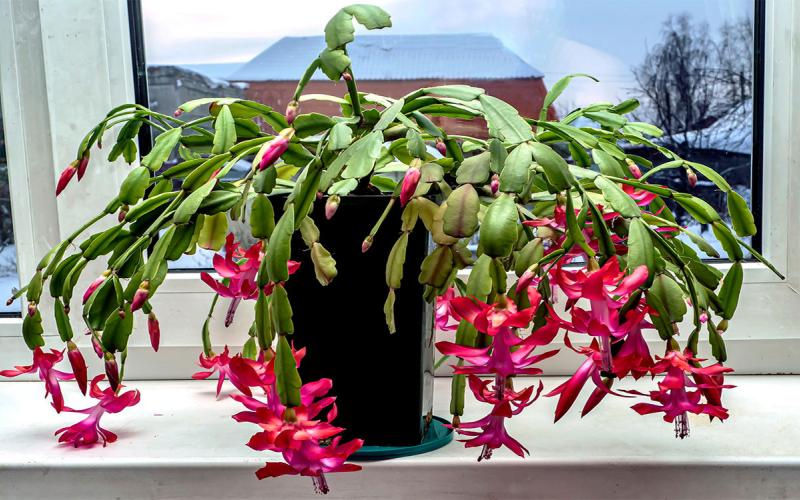This is the time of the year where many people enjoy sitting around a fire. A roaring fire provides a cheery way to spend a cold winter evening. However if you choose the wrong firewood, it could become a smoky evening with little heat but lots of sparks flying from wood that has a musky odor. You have to start with the right wood.
Firewood differ in heat value as well as the color of their flame, fragrance, and sparking depending on the species. Crabapple and apple have the most colorful flames, walnut is one of the most fragrant, and bur oak produces few sparks.
Heat Value
The most important characteristic for many homeowners is not the color or fragrance, but the heat value. Table 1 illustrates the ranking of some of the most-common South Dakota firewood species by heat value (in million BTUs per cord of seasoned wood) along with smoke and sparks.
As you can see from Table 1, oak will generate almost twice the heat as basswood or cottonwood. Sales of ‘mixed hardwood’ often contain a high proportion of cottonwood mixed with a little ash and elm. This is going to burn fairly quickly without generating a lot of heat. Cottonwoods are best for kindling as they burn readily but to keep the fire going oaks and honeylocust are among the best.
|
|
(million per cord) |
|
|
|---|---|---|---|
| Bur oak |
|
|
|
| Mulberry |
|
|
|
| Honeylocust |
|
|
|
| Sugar maple |
|
|
|
| Black walnut |
|
|
|
| Apple & Crabapple |
|
|
|
| Birch |
|
|
|
| Redcedar/Rocky Mt. Juniper |
|
|
|
| Green ash |
|
|
|
| Hackberry |
|
|
|
| American elm |
|
|
|
| Boxelder |
|
|
|
| Willow |
|
|
|
| Spruce |
|
|
|
| Ponderosa pine |
|
|
|
| Aspen |
|
|
|
| Cottonwood |
|
|
|
| Basswood |
|
|
|
1BTU stands for British thermal unit, the unit of energy required to increase the temperature of one pound of water from 60 to 61° F.
A gallon of propane is the equivalent of 100,000 BTU’s so a cord of green ash has the heat equivalent of about 200 gallons of propane.
Purchase Considerations
Quantity & Price
Firewood should always be purchased by the cord or as a fraction of a cord. A cord is a stack of wood 4 feet wide, 4 feet high and 8 feet long, or similar dimensions, that containing 128 cubic feet of space. This will usually mean about 70 to 80 cubic feet of solid wood once the air space between pieces is subtracted. If you buy firewood by the cord you are purchasing a known quantity of wood. If you buy by the pick-up load, you are getting a range of possibilities. Most pick-ups with a 6-foot bed hold about a fourth of a cord while an 8-foot bed may hold a third of a cord. You can find pick-up loads of wood being advertised for around $60 to $90 this fall and winter, while a cord may cost $240 or even more depending upon the species. A pick-up load may sound like the better bargain since it is cheaper but remember you are getting about three to four times the amount of wood with a cord. These are prices for the Eastern side of the state.
Pine
There are numerous firewood sellers in the Black Hills selling pine for about $150 to $200 a cord. Pine is not the best firewood. It does not generate much heat compared to other species. It does generate a lot of sparks so a fireplace screen is essential.
Seasoning
Also, regardless of species, be sure to buy seasoned firewood. This is wood that has been split, stored off the ground and protected from the elements for at least nine months. After this time period, the wood has a moisture content of less than 28 percent so it should burn long and hot rather than steam and smoke in the fireplace. A quick way to check if the wood is dry is to examine pieces and see if they have cracks and splits. As wood dries, it shrinks so cracks will appear in the end of the split pieces.
Sources
Finally buy any firewood from local sources. The most likely potential source of emerald ash borer, an invasive insect already responsible for the loss of more than 50 million ash trees across the Midwest, is from out-of-state firewood. Purchasing firewood that has been harvested within the state is one of the best means of preventing the introduction of this insect to our state’s communities and forests.

